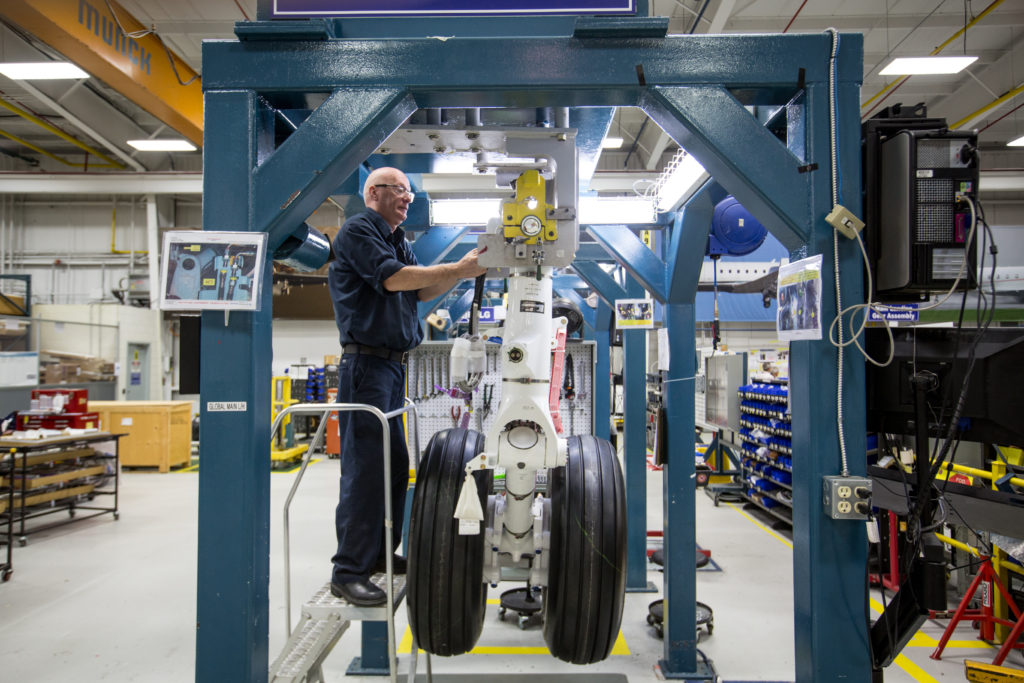Estimated reading time 6 minutes, 38 seconds.
The Quebec government and a leading advocacy association have been encouraging partnerships among the province’s more than 200 small- and medium-sized aerospace businesses for years, as a way to strengthen overall competitiveness.
The COVID-19 pandemic could serve as the catalyst for stressed companies to finally consolidate.
As original equipment manufacturers (OEMs) look to mitigate supply chain risk, they will be seeking to place work with larger, more resilient partners — “suppliers that are financially stronger or can participate in consolidation movements,” Suzanne Benoit, president of Aero Montreal, a strategic think tank for the city’s aerospace cluster, told the Global Supply Chain Summit on May 10.

Small and medium sized enterprises (SMEs), many of which have struggled through successive waves of the pandemic, “will likely need to be able to respond to larger work packages. They will have to deal with greater price sensitivity as the supply chain consolidates,” she predicted. “They will have to re-double their efforts to remain competitive and carve out a place for themselves.”
Mergers and acquisitions were not the primary focus of the two-day virtual event, hosted by Aero Montreal, but the Quebec government intends to “support companies in becoming more integrated into global supply chains,” said Pierre Fitzgibbon, Minister of Economy and Innovation — as the provincial government prepares to release its much-anticipated aerospace strategy. “We will support them in gaining better access to new business opportunities.”
Quebec will align its strategy with the plans of OEMs and Tier 1 companies, he suggested. The pandemic has highlighted the need for geographically tighter and more resilient supply chains as larger companies manage COVID-19 conditions across multiple jurisdictions.
“Tier 1 suppliers require a solid supply chain. We have seen from the larger Tier 1s a requirement for us to help our SMEs become more productive, because that will facilitate a tighter supply chain and more competitiveness,” he said.
Prior to the pandemic, the provincial government had been promoting investment by smaller companies in innovation and digital technologies to improve their productivity. While many companies have shown creativity in shifting services and products to meet the challenge, spending on R&D and Industry 4.0 initiatives has slowed, Fitzgibbon noted.
He acknowledged the efforts of Aero Montreal programs such as MACH and MACH FAB 4.0 to help small companies improve business processes and adopt digital and advanced manufacturing technologies, and confirmed the government would “continue to support initiatives that enable suppliers and subcontractors to achieve manufacturing excellence sponsored by major OEMs.”
Through Investissement Quebec, the government has earmark financing for productivity innovation, and it is now preparing to unveil “innovation zones,” including one for aerospace, that will connect large and small sector stakeholders with start-ups, academic and other labs and research centers to “create an environment which facilitates the transition from idea to market, attracting both local and foreign private investment and stimulating greener and more sustainable growth.”
But Fitzgibbon admitted those initiatives might not be enough to help businesses make a full recovery from the pandemic. He said the ministry was “contemplating the possibility of supporting the launch of an industry-focused private equity fund and at fostering growth and consolidating Quebec’s leading aerospace suppliers.”
It is one thing to make digital transformation investments in a company, he noted, “but sometimes critical mass becomes essential. . . . As the supply chain becomes more international, companies need a minimal critical mass to be able to invest in R&D, in innovation.”
OEMs would back such a play, said Maria Della Posta, president of Pratt & Whitney Canada. “We believe SMEs are at the heart of our success here.”
Aero Montreal created an Alliance for Aerospace Recovery in May 2020, with input from over 30 member companies, to develop recommendations for an eventual recovery. Some have found their way into recent federal and provincial announcements, including $250 million over three years from Ottawa in the Budget 2021 for regional development agencies to create an Aerospace Regional Recovery Initiative — which would include greening operations and products.
“The pandemic has pushed the entire sector towards its shift to de-carbonization,” said Benoit.
Electric and hydrogen propulsion could be the power source for regional, short haul, and possibly even some medium haul markets by 2035, she noted. While lighter aerostructures and more efficient systems change flight characteristics.
“These changes will have a major impact on the supply chain,” she said. “We can and must view this as a crisis that is creating opportunities for our industry. Recovering and becoming stronger will not be a matter of making a quick transition, but of boosting our resilience over the long term.”








